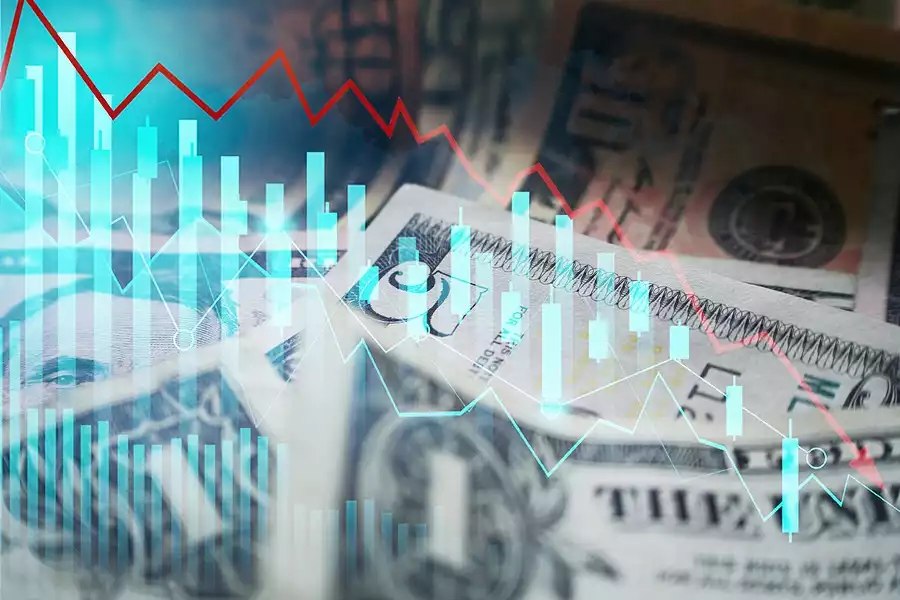January 25, 2022 Updated October 22, 2023
842
1 votes
Reading time: 1 minutes
The firm's main research and development office is based in Tel Aviv Israel. It originally specialized in Forex and indices spreadbetting and CFDs but has recently expanded in stock trading also.

The 26th United Nations (UN) Climate Change Conference of the Parties (COP26) was held in Edinburgh in November 2021. For environmentalists, it was a disappointment and fell short of expectations because the goals for the environment and climate were not met. The fall-out encouraged critics of environmental, social, and governance (ESG) investing. These critics are cynics when it comes to the validity and relevance of private entity ESG efforts.
The cynics may eat their words. The data indicates that ESG investing is not just a trend. ESG investing is here to stay.
At the time of writing, eToro has 2.2 out of 5 star on Trust pilot. The comments suggest that the platform offers some impressive features but withdrawing money can be difficult. Having said that, some of the negative reviews appear to be rants rather than constructive criticism. This can be examples of traders losing money through their own recklessness rather than eToro's fault. You should therefore take this reviews with a pinch of salt. “the platform offers some impressive features but withdrawing money can be difficult.” OANDA is a global financial services company providing advanced currency solutions to both retail and corporate clients all over the world. In this article, we are going to review this broker’s trading options, tools, platforms, spreads, commissions, security measures, and educational resources to help traders make the right choice. AvaTrade offers a wide variety of trading solutions (spread trading, CFDs, and social trading), and peace of mind with its comprehensive regulation, covering the EU, Australia, Canada and South Africa. Clients can use a variety of platforms for discretionary and automated trading. Offers multiple asset classes, platforms, and regulated in a variety of regions. Caters for a global audience. Awarded with the Highest Overall Customer Satisfaction Award for 5 years running - Investment Trends CFD Report 2015. A standalone copy-trading ecosystem, providing equities, foreign exchange, commodities and cryptocurrencies markets. Provides a global selection of brokerages. Pepperstone is a global regulated broker that provides its clients with the latest technologies for trading multiple assets such as Forex, indices, cryptocurrencies, stocks, ETFs, and commodities. This article provides an overview of its trading platforms, tools, fees, protection measures, and other aspects to help traders make a more informed decision.![]() Best Award Winning Brokers
Best Award Winning Brokers Show Search Filters
Show Search Filters
76% of retail investor accounts lose money when trading CFDs with this provider.
76.6% of retail investor accounts lose money when trading CFDs with this provider. You should consider whether you understand how CFDs work and whether you can afford to take the high risk of losing
76% of retail investor accounts lose money when trading CFDs with this provider.
Environmental, social, and governance (ESG) investing is an investment strategy. It focuses on companies that strive to make the world a better place. At least that is what they claim. Call it investing with a conscience. Independent ratings help investors assess a company’s behavior and policies regarding ESG issues and performance.
According to MSCI, which provides ESG and climate products, more investors are engaging in ESG investing. They are increasingly using climate data and tools to support their decisions. Ethical considerations are a large part of the attraction to ESG investing; therefore, many investors are including these instruments in their portfolios alongside traditional assets.
ESG investing first emerged in the 1960s as socially responsible investing. Investors tended to exclude certain stocks or industries from their portfolios because of ethical reasons. Two examples were tobacco farming and companies that supported the South African apartheid regime.
In 2004, Kofi Annan launched an initiative to incorporate ESG principles into capital markets. The initiative was the precursor to the Principles for Responsible Investment in 2006. This framework has approximately $90 trillion in investments by 2018.
Attention has been given to ESG investing recently due to Greta Thunberg. Thunberg was sixteen years old when she was named 2019 Time person of the year for championing climate change as a global threat. Thunberg’s impact has been coined “The Greta Thunberg Effect”. According to Morningstar, ESG investment inflows reached almost $20.6 billion in new assets in 2020. This was four times as much as in 2018 as a result of Thunberg’s efforts.

At the 2020 World Economic Forum in Davos, climate change was top of the agenda for the first time. Also in 2020, Larry Fink, CEO of the world’s largest exchange-traded fund (ETF) provider, Blackrock, used his entire annual letter to shareholders to promote ESG investing.
That same year, the 94-year-old British TV broadcaster and life-long climate activist Sir David Attenborough released a Netflix documentary “A Life on Our Planet”. It drew attention to the dire state of biodiversity on earth, melting ice caps, and innumerable extreme climate events.
COP26 addressed new efforts to address climate change challenges in Scotland in 2021. Around 25,000 representatives from 200 countries submitted plans to reduce greenhouse gas. This also included limiting global warming to 1.5 degrees Celsius.
The final agreement reached at COP26 was the Glasgow Climate Pact. It called on all world participants to advance funding and the resources needed to achieve a climate strategy. Outside of COP26, over 3,000 companies have signed on to the United Nation’s “Race to Zero” campaign, showing a commitment to reaching net-zero emissions by 2050.
Companies are showing more willingness to address ESG matters. Yet there is no recognized framework for them to demonstrate their commitment. One framework, the Task Force on Climate-Related Financial Disclosures (TCFD) is supported by the G7; however, it has been criticized for not addressing the social and governance aspects of ESG.
At COP26, the International Financial Reporting Standards Foundation (IFRS) announced the establishment of the International Sustainability Standards Board (ISSB). The board plans to create a comprehensive global baseline of sustainability disclosures for the financial markets. As a result, these IFRS Sustainability Disclosure Standards will help to set systematic accounting principles.
Tackling ESG issues requires the engagement of the private sector. New, universal guidelines will help companies to implement and report on their effective ESG measures. Currently, a number of ESG reporting frameworks use their own metrics, methodology, and scoring system; for example, the Carbon Disclosure Project (CDP) and the Climate Disclosure Standards Board (CDSB).
There are marked differences between traditional investing and ESG investing, although ESG investing is increasingly being integrated into traditional investment strategies. The two types of investing strategies were initially designed to deliver different outcomes with different investment rationales.
ESG investing aims to optimize environmental, social, and governance (ESG) factors or outcomes. The investment strategy is designed to deliver returns with consideration for the human and economic environment. There is an assumption that the financial performance of organizations is increasingly affected by environmental and social factors.
Traditional investing strategies are designed to generate returns. The ESG impact of a traditional investment strategy is rarely a concern. Instead, traditional investors choose companies and assets to build a stock portfolio that will maximize returns. They consider their risk profile and time horizons rather than the climate or risk to the environment.
Different investors have different aims when it comes to ESG investing. There are three main concerns that investors subscribe to: portfolio integration, personal values, and having a positive impact.
Some ESG investors believe that incorporating ESG into their portfolio will improve their returns. By including an analysis of ESG factors, an investor can identify better managed companies. Companies who think about their environment tend to be more nimble and able to respond to challenges.
There are multiple ESG factors that an investor might consider. They are the effects of regulatory, technological, or demographic shifts on a sector, region, or company.
Some align their investments with their ethical, religious, or political beliefs through ESG investing. For example, an investor might eschew companies involved in controversial activities. These can include weapons, tobacco, gambling, or fossil fuels. This approach is based on value-based goals rather than economic-based goals.
Many ESG investors want their investments to make a difference in the world. These investors select companies that provide solutions to environmental or social challenges. Using formal frameworks is a start. For example, the U.N. Sustainable Development Goals (SDGs) allow investors to monitor their ESG adherence. They can check whether their investments are generating positive social or environmental impacts as well as financial returns.
As the name suggests, there are three different components of ESG investing: environmental, social, and governance. Many brokerage firms, mutual funds, and robo-advisors offer products that are analyzed using ESG criteria.
Environmental criteria consider how a company performs as a custodian of nature. These include energy use, pollution, waste, natural resource conservation, and the treatment of animals.
The criteria also look at the risks a company faces and those it creates. For example, is the company itself exposed to extreme climate conditions, hazardous waste, or toxic emissions? Lastly, whether the company abides by environmental regulations is a factor.
Social criteria examine an entity’s business relationships with vendors, customers, its communities, and its stakeholders. For example, does its supply chain include suppliers with the same ethical position? Does the company support a union or its local community by donating a percentage of its profits? Does the company ensure safe working conditions for the well-being of its staff?
Governance is how a company manages its leadership, executive pay, internal controls, and shareholder rights. Investors and stakeholders seek assurances that companies avoid choosing board members with conflicts of interest. This may include political leanings that do not reflect the company’s values.
There are impacts that are occurring as a result of ESG investing. The width and breath of these highlight how mainstream ESH investing is becoming.
In 2021, Norway’s trillion-dollar sovereign wealth fund sold the last of its portfolio of oil and gas companies. This was both a way to step away from its reliance on the petroleum industry and an economic decision because the fund reported losses of $10 billion in oil and gas shares.
In 2017, the central bank of Norway had advised the government to divest of its oil and gas interests to protect the wealth fund from price volatility. Norway intends to act as an international leader on climate change.
Some funds take a more activist stance when it comes to ESG. Examples are Impactive Capital, Inclusive Capital, and Engine No. 1. These funds attempt to engage non-ESG companies in positive ESG practices and convert them.
For example, according to CNBC, Engine No. 1 won three board seats at Exxon through a proxy fight. It subsequently urged the energy giant to focus on clean energy infrastructure, net-zero emissions, and renewable energy.
Impactive Capital influenced Asbury Automotive, an automotive retailer and repair company. According to CNBC, Impactive has made inroads in the social aspects of ESG by working with the automotive company to provide maternity leave and women’s bathrooms for its female staff. Impactive also encouraged Asbury to employ more women as mechanics and solve labor shortage issues.
Here are some ESG themes examples.
The Just Transition Declaration was signed by more than 30 countries at COP 26. This movement is spearheaded by labor unions, low-income communities of color, and environmental groups. These groups are collectively trying to expose industries that harm workers, communities, and the environment.
Net zero is when an entity’s production of greenhouse gas equals the amount it removes from the atmosphere. For a company, net zero occurs when the amount of greenhouse gas added by an entity is no more than the amount taken away. The United Kingdom was the world’s first major economy to set a target of being net zero by 2050.
Because of the lack of regulation, policies, and required disclosures, monitoring companies’ net-zero efforts is not easy. According to Capital Monitor, although just over one-fifth of the world’s 2,000 largest companies have made net-zero pledges, “only 20% of those pledges align with science-based targets.” Sceptics claim that companies are “merely paying lip service” to carbon-cutting to satisfy investors and regulators.
Investors are increasingly seeking greater sustainability in public and private assets. Thus, there is a clear need for global, consistent, and shared reporting standards. The IFRS Foundation recently announced the formation of the International Sustainability Standards Board, or ISSB. This merges two important standards-setting entities.
Meanwhile, Morningstar and other financial firms seek to clarify the terms used for sustainable investing. This can help investors identify problems, such as greenwashing. Greenwashing is overstated or unreliable sustainability claims made by companies and issuers. The hope is for consistent standards. These would be like those of the International Accounting Standards Board (IASB).
Investors and companies are less worried about the environment and the greater good than about the value of their assets. ESG is playing into their investment choices because they believe that companies that consider ESG factors in their business strategies will fare better in the long run.
The problem for investors and other stakeholders is there are no global standards and metrics to monitor and report company ESG initiatives. Therefore, it is therefore difficult to know what really is going on. Companies publish glossy marketing materials that wax lyrical on their environmental and social engagement. This bumps ratings with third-party entities, but what is the real truth? This greenwashing is one criticism of ESG investing.
Other incongruities are highlighted by ESG critics. For example, at COP26 in Glasgow in 2021, President Biden talked about the “brief window before us”: nations must reduce carbon emissions from burning oil, gas and coal that pose an “existential threat” to humanity. However, days earlier, he had urged global oil producers to pump more of the fossil fuels that are warming the planet.
Political and economic hurdles must be overcome as companies become more green, and energy production moves away from fossil fuels. Energy experts and climate activists say the world cannot increase oil and natural gas production and avert catastrophic global warming.
Meanwhile, to combat rising gas prices, President Biden urged major energy producing countries with spare capacity to boost production to increase the supply of oil. Emmanuel Macron of France, the nation that hosted the 2015 meeting in Paris where 200 countries agreed to tackle global warming, supported Biden.
Critics seized on the irony. Biden responded by saying that the transition to lower-emission sources of energy would take years, and people needed to drive their cars and heat their homes in the meantime.
There are many myths that might hold investors back from ESG investing.
In fact, ESG investing has outperformed or performed in line with traditional investments. According to Morningstar, in the first quarter of 2020, 24 out of the 26 ESG index funds the firm tracks outperformed their traditional counterparts. Of 206 sustainable equity and ETF funds in the United States, 44% ranked in the top quartile, 70% in the top two, and only 11% in the lowest quartile (based on year-to-date performance net of expenses). The fact that this resilience was apparent during the COVID-19 pandemic further debunks this myth.
ESG investing is all about long-term investment. Companies mitigate the risks that are created by climate change and social problems by incorporating sustainable practices. For investors, a portfolio that includes ESG investments can align with their personal values. This on top of building a resilient portfolio that can withstand market instability and socio and environmental risks.
A 2019 MSCI study found that ESG quality affected stock performance, risk, and valuation. Companies that had higher ESG scores showed higher profitability, lower risk of drawdowns, and lower systematic risk overall.
ESG investment is a growing trend. According to PwC, by 2022, ESG will be considered an integral component of regular investing. The reasons given are the following:
ESG appeals to all sectors of society. According to Morgan Stanley, 85% of the general population has an interest in sustainable investing. In fact, a study by Nuveen found that baby boomers and Gen Xers are the current drivers of ESG investing, not millennials.
ESG investing is not just about excluding the bad apples. The goal of ESG investing is to build a portfolio according to your interests and values. It is not just about excluding companies whose business models you do not agree with. It is also not as simple as blanket exclusion of a company.
For example, a company might score highly on social factors, such as its treatment of workers, LGBTQIA+ rights, or racial justice. Yet it will not score so well on environmental initiatives. Whether an investor favors a company depends on their own tolerance thresholds.
It is true that there is no single global standard for ESG reporting, but there are other ways of monitoring ESD and its effects on portfolios.
Organizations like Morningstar, MSCI, Sustainalytics, and U.S. SIF have established comprehensive ESG rating systems albeit with varied metrics. The truth is that ESG investing, for now at least, is about customizing portfolios to reflect your values and your projections for the future. So, the metrics should come from you, the investor.
The lack of consistent reporting standards is clearly the critical missing component of ESG investing. However, organizations like SASB are helping to move the dial. The SASB is a nonprofit organization that has set standards and reporting guidelines to measure companies for better transparency.
The United Nation’s Sustainable Development Goals (SDGs) also provide a framework for measuring sustainability impact. For example, does a company help achieve the U.N. SDGs, or does it pose a risk to those SDGs?
Today, many companies divulge their data on diversity. This includes employment; wages; greenhouse gas emissions; water, coal, and petroleum use; and women in leadership. It is up to the discerning investor to decide how they value an entity’s reported efforts.
Biofuel: Fuel produced from organic matter or waste through modern processes and used as an alternative to fossil fuels.
Biomimicry: Emulating models or systems found in nature to solve complex human problems.
Carbon footprint: The total greenhouse gas emissions produced by an entity as a measurement.
Carbon offset: Reductions in CO2 or other greenhouse gases that offset or compensate for emissions made elsewhere.
CDP: The Carbon Disclosure Project encourages towns, cities, and companies to disclose the environmental impact of large companies. The aim is to normalize environmental reporting and risk management. This drives disclosure and promotes a sustainable economy.
CSR: Corporate social responsibility is a type of private business self-regulation. It contributes to ESG societal goals by engaging in or supporting volunteering or ethical practices.
Divestment: Selling assets and securities that do not align with the investor’s ESG values. This may also include ones that do not display commitment to ESG and responsible investing practices.
ESG integration: Including ESG factors during the investment process for risk mitigation and long-term performance growth.
Fair trade: A trading concept to provide producers in developing countries sustainable and equitable trade relationships.
Greenwashing: Overstating a company’s ESG efforts. This can include promoting something as more environmentally-friendly than it really is.
GRI: The Global Reporting Initiative is an organization with a set of international standards. This helps business and government entities to report their impact on ESG issues
Net zero: Net zero is when the amount of energy used by an entity equals the amount of renewable energy it creates.
Institutions worldwide are working hard to establish ESG rules, regulations, and reporting frameworks. These will further cement ESG as a fixture in traditional investments. The U.S. SIF’s 2020 Trend Report showed a 42% increase since 2018 in investors who are considering ESG factors.
Also, one-third of U.S. assets under management use sustainable investing strategies. Even top investment conglomerates like Blackrock are shining the spotlight on ESG investments. These statistics indicate that ESD is far from just a trend, and it will become tradition.








